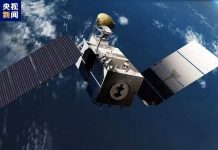Thanks to samples brought to Earth by Apollo astronauts, scientists have determined that the Moon is more than 4.46 billion years old. It existed long before the appearance of life on Earth and plays an important role in the history of our planet and the formation of its climate.
More than 4 billion years ago, during the young solar system, the Earth experienced a collision with a huge object the size of Mars. The Moon formed from the debris, but the exact time of its formation remained a mystery.
In the new study, scientists used regolith samples returned from the Moon by Apollo astronauts in 1972 to more accurately determine when the Moon formed. Their discovery made it possible to establish that it is 40 million years older than previously thought. The Earth’s natural satellite is now believed to be over 4.46 billion years old.

“These samples are the oldest known solids formed after the impact. And because we know their age, they provide support for lunar chronology,” says Philipp Heck, senior author of the study. The discovery was the result of work by Philip Heck and graduate student Jennika Greer.
“We were approached by our co-authors, Bidong Zhang and Audrey Bouvier, who needed nanoscale analysis of these samples to fully understand them,” says Greer, who is now a research fellow at the School of Geographical and Geosciences at the University of Glasgow.
satellite turned out to be 40 million years older than thought
Regolith contains tiny crystals that formed billions of years ago. These crystals serve as a key indicator of when the Moon likely originated. When an object the size of Mars collided with the Earth and formed the Moon, the energy from the impact melted the rock that later formed the surface of the Moon.
“As long as the surface was molten, crystals could not form and survive. Therefore, any crystals on the surface of the Moon must have formed after the lunar magma ocean cooled. Otherwise, they would have melted and their chemical traces would have been erased,” says Heck.
Since the particles must have formed after the magma ocean cooled, determining the age of the samples allowed us to establish the minimum possible age of the Moon. Previous research by co-author Bidong Zhang had indirectly pointed to the same range, but the latest study was the first use of an analytical technique called atom probe tomography to “determine” the age of the oldest lunar particles.
“In atom probe tomography, we start by sharpening a sample of lunar material using an ion microscope. We then use ultraviolet lasers to evaporate the atoms from the surface. Atoms move through a mass spectrometer, the speed of movement tells us their mass, which in turn allows us to determine the composition,” Greer said.
This atomic analysis carried out at Northwestern University, showed that many atoms had undergone radioactive decay. When an atom has an unstable configuration of protons and neutrons in its nucleus, decay processes occur in it, and then the atom emits several protons and neutrons. Scientists determined how long this process takes, and by studying the proportion of different isotopes of uranium and lead in a sample, they were able to more accurately determine the age of the samples.



